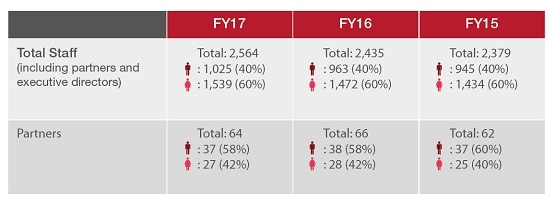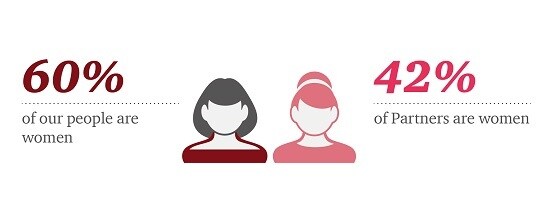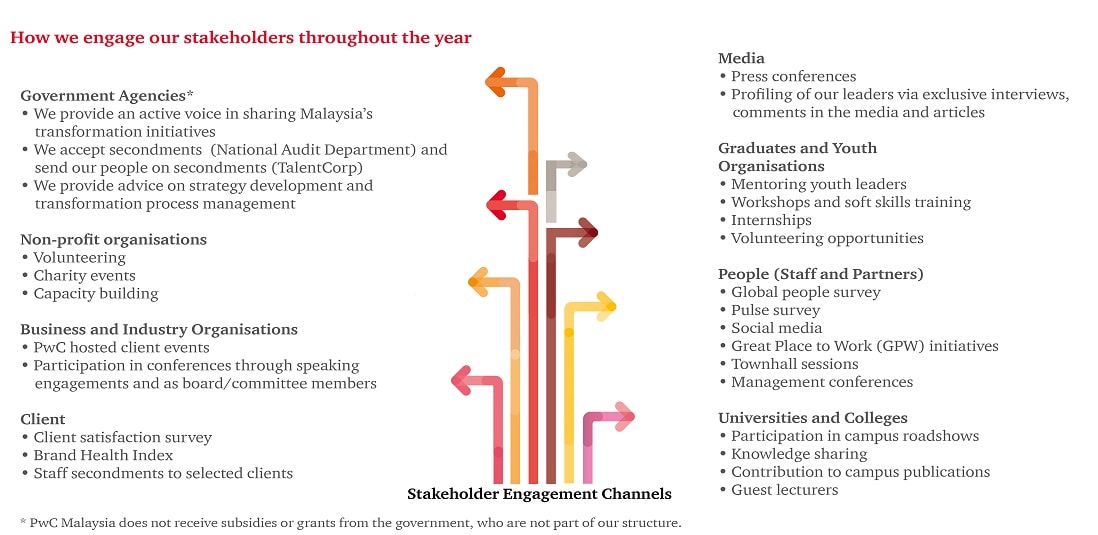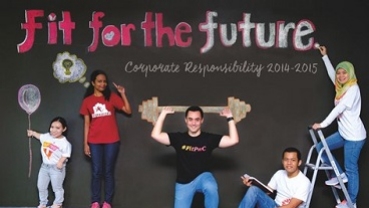
About this report
About the firm
Find out about PwC Malaysia through these links:
- Locations and markets served here.
- Services we provide here
- Legal entities
- Awards and recognition for our work
Note: We are unable to report revenue numbers for competitive reasons.

About our people
Our numbers have grown steadily over the past three years, as we broaden and diversify our services in line with client needs and global megatrends.

Overall attrition rate at PwC Malaysia decreased by 2% in the last three years and we have been consistently lower than the industry average of 25.7% (Audit Oversight Board report, 2016).

Helping to solve important problems
Many of our Partners and Directors serve as board/committee members in various professional bodies and industry organisations. In Malaysia, these include:
- 30% Club
- Financial Reporting Foundation
- Malaysian Accounting Standards Board (MASB)
- Malaysian Institute of Accountants (MIA)
- Malaysian Institute of Certified Public Accountants (MICPA)
- Islamic Finance for Labuan Offshore Financial Services Authority
- Association of Chartered Certified Accountants, Malaysia (ACCA)
- CPA Australia
- Institute of Chartered Accountants in England and Wales (ICAEW)
- American Malaysian Chamber of Commerce (AMCHAM)
- Association of Chartered Islamic Finance Professionals in Malaysia
- International Accounting Standards Board (IASB) Committee on Islamic Finance
Key appointments
- Executive Chairman, Dato’ Mohammad Faiz Azmi - present or past appointments held:
- Chair of Islamic Finance Consultative Group (IFCG), which is part of the International Accounting Standards Board (IASB).
- Appointed President of the Malaysian Institute of Accountants (MIA) in July 2015. He has previously served as a Council Member of MIA and was also the chair of the MIA Capital Market Advisory Committee. He was also past Chairman for MASB from 2009 to 2012.
- Represents PwC on Peneraju Professional Akauntan, a programme by the Government to increase the number of accountants in Malaysia.
- Chairs the Asian-Oceanian Standard-Setters Group (AOSSG) on Islamic Finance.
- People Partner, Pauline Ho is a member of the Steering Committee of Malaysia’s 30% Club launched in May 2015 to increase the number of women holding top decision-making posts in the private sector.
- Chief Risk Officer, Lee Tuck Heng was appointed Chairman of the Auditing and Assurance Standards Board (AASB) (MIA) in July 2013.
Our report covers PwC’s Purpose, where we want to be in 20201 and how we will reach it.
We have been reporting our Corporate Responsibility activities since 2009 and began reporting against the Global Reporting Initiative (GRI) framework since 2012. This year we used Integrated Reporting <IR> principles to guide our content which has been prepared in accordance with the GRI Standards: 'Core option’.
We have the support of our Sustainability & Climate Change Consulting Team in verifying the report in line with GRI guidelines; as well as our Integrated Reporting team’s advice on <IR>.
This full report and the summary which highlights achievements in FY17 covers the operations of PricewaterhouseCoopers Malaysia (PwC Malaysia) during the firm’s 2017 financial year - 1 July 2016 to 30 June 2017.
There is no re-statement of information from earlier reports, issued from 2009 to 2016.
It covers the operations for PwC Malaysia across all entities and lines of services outlined here.
There was a new entity formed in 2018 ie PricewaterhouseCoopers PLT (LLP0014401-LCA & AF 1146) was registered on 2 January and with effect from that date, PricewaterhouseCoopers (AF1146), a conventional partnership was converted to a limited liability partnership.
This entity was formed due to structural changes within the firm and does not affect overall reporting boundaries.
1 2020 has been a focus for our network. Given the pace of change in the world, we need to focus on the next few years in order to build our longer-term view. As we draw closer we will adapt our focus areas as a business accordingly.
Contact us





















